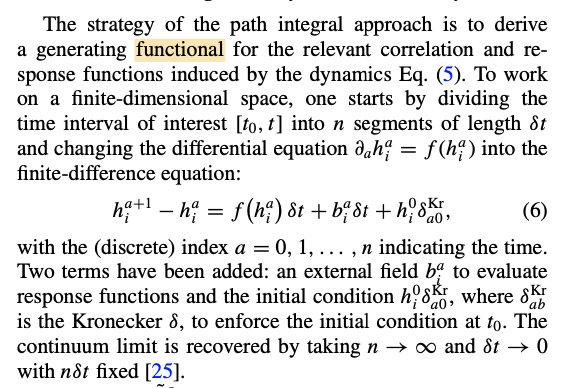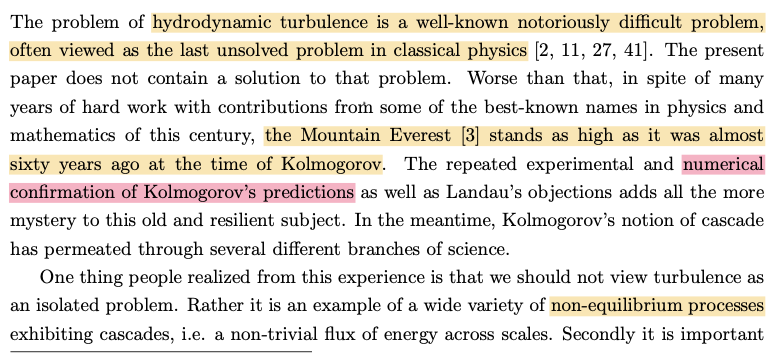This follows from my other posts: https://math.stackexchange.com/q/4451013/577710 https://math.stackexchange.com/q/4451150/577710. Since a question there (Q3) is a bit complex, I decided to have a new post for more discussions on it.
We know $g$ is proportional to (square root of) the variance of $J$'s every entry ($J_{ij}\sim \mathcal{N}(0,g^2/N)$).
Why is it also positively related to the variance of $h_i$.
In other words, why stronger coupling results in stronger neuronal signals, from a math perspective, in particular, for large systems?
The author says
If the matrix $J_{ij}$ is symmetric, i.e., $J_{ji}=J_{ij}$, [...] The dynamics hence converges toward stable fixed points.
If the matrix is nonsymmetric, [...] a richer steady-state behavior emerges: besides fixed points, limit cycles and chaotic behavior are also possible.
Clarification of notations in the paper:
Noteworthy details:
The assumption of zero average implies that there is not a preferred type of synaptic connection... inhibitory ($N\overline J_{ij}<0$) or excitatory ($N\overline J_{ij}>0$).

General questions: The paper is not easy for me. While I do not expect others to read the paper for me, how could I understand a paper like this? For example, what step should I follow, what prerequisite knowledge should I familiarize myself with?
Brief summary of topics and methods: The paper uses some stochastic diff eq (SDE) (part of SD), functional, Fourier transform, etc.
The research seems to be within the domain of stochastic dynamics (SD) in statistical mechanics. The author here adopts a frequently used path integral method; while I am not familiar with the method, it seems to be about variational methods, which consider a functional (typically an integral; the author mentions 'action') and a small variation $\delta$, introduced to eq6(?) and resulting in a stochastic diff equ.
General background: The following is an excerpt from a paper about stochastic PDEs in hydrodynamic chaos, which seems to be relevant to the above problem of chaos in neural networks.
Specific questions: When $J_{ij}$ is symmetric, there is an energy function (eq 3), while when $J_{ij}$ is asymmetric, there is not, why? And why is the energy function in the form of eq3, and its relaxation in the form of eq2?
References:
Path integral approach to random neural networks https://journals.aps.org/pre/abstract/10.1103/PhysRevE.98.062120 this is what is cited by the author about $g$, $h_i$.
Chaos in Random Neural Networks https://journals.aps.org/prl/abstract/10.1103/PhysRevLett.61.259 this is a paper that gives solution to the nonlinear ODEs.


